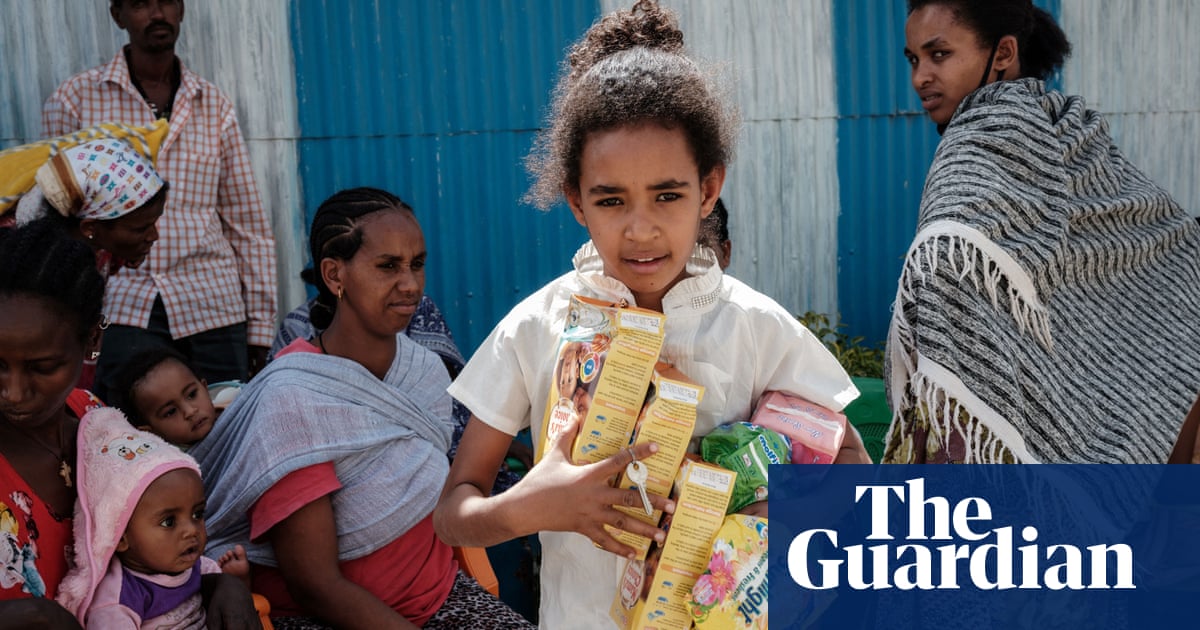
hoosing a book for a sheep is no easy task. I’m sitting on the floor in front of my bookshelf, assessing the options. Joyce and Melville seem a bit highbrow and esoteric for the average sheep. Maybe The Shepherd’s Life by James Rebanks? A little on-the-nose. Le Carré? Too many trench coats. Inspiration suddenly strikes. I reach for Orwell.
“Not Animal Farm,” says my wife, without looking up. “It’s too obvious.”
“I wasn’t even thinking Animal Farm,” I say, slightly peeved. I slip Animal Farm quietly back onto the shelf.
The next morning I’m on my way to Edgar’s Mission, a not-for-profit animal shelter just outside Lancefield in Victoria’s Macedon Ranges. It’s dawn when I pull in to the gravel car park, and I can hear crows cawing in the gum trees. It’s late January and the hills are the colour of golden wheat, with grass that audibly crackles and pops underfoot. Farm volunteers in polar fleece are already arriving for work.
Edgar’s Mission provides care for homeless, abused, injured or abandoned animals, especially livestock or “farmed animals”. It was founded in 2003 by Pam Ahern after an encounter with a large white-cross piglet called Edgar Alan Pig. Ahern quit her full-time job and built the sanctuary, which now sprawls over 153 acres of bucolic, Constable-esque scenery. When small children are told that Lucky “went to the farm …” this is probably the sort of earthly paradise they imagine. A property given over entirely to the wellbeing of 432 rescue animals: ex-breeding pigs, injured lambs, one-eared survivors of dog attacks, cows born with blindness or other birth defects, chickens, roosters, turkeys, rabbits, spring-loaded baby goats and stray cats lounging in the sun.
We can treat their physical wounds, but psychological damage is much harder to fix
Pam Ahern
The Mission offers various forms of rehabilitation, most of them overseen by qualified vets, but I’m here to investigate one of their more unusual programs: reading to animals.
“We started the reading program a few years ago with two goats, Marieke and Michaela,” says Ahern. “Probably the most frightened goats I’d ever seen. They were climbing the barn walls to get away from us. It’s always the way with animals that come through here: we can treat their physical wounds, but psychological damage is much harder to fix.”
Ahern decided to try reading to the goats. She’d heard about similar programs being used to treat anxiety in rescue dogs, particularly ones who’d been mistreated and were naturally suspicious of humans. For several weeks, she sat close to Marieke and Michaela, reading them stories, keeping her voice calm, avoiding direct eye contact. “After a while, they took the initiative and started coming towards me. We eventually settled them on this fancy property down in Flinders,” she says. “Reading isn’t really about the words or the books. It’s just the soothing tones of our voice.”
Ahern put out a call for reading volunteers on Facebook. One of the women who answered was ex-academic and Kyneton local Nicky Peters. She’s been reading to injured animals at Edgar’s Mission for the last three years. “Usually children’s books,” Peters says, sitting on a plastic stool beside Anastasia, a fly-struck sheep undergoing rehab, and Rin Tin Tin, a baby goat who moves in excited sideways hops. “They seem to like Enid Blyton at the moment. Well, you can see!” Nicky holds up several goat-chewed pages from The Secret of Spiggy Holes.
“I’ve been a strict vegetarian most of my life, but I became a vegan a couple of years ago. Most of the staff here are vegan – there’s actually no animal products allowed on the property. And the reading program is just fantastic. I get so much joy from being around the animals, feeling their warmth and affection in some small way.”
Veterinarian and behavioural expert Dr Emma Hughes says the Edgar’s Mission reading program might be unique in Australia, at least for livestock and farmed animals. “We know animals do become calmer when they associate voices with something positive,” she says. “Reading works because it’s non-confrontational. Most of these animals are prey species, so they don’t like people getting too close or making direct eye contact. It’s a brilliant way to get humans to behave appropriately.”
In the afternoon, Ahern organises a reading session for me with three sheep: Lady Samantha, Harry Potter and Harmony, a lamb whose little front legs are set in blue splints. I settle down inside a corrugated shed and pull out my copy of Roald Dahl’s Going Solo. “I’m not sure if you’ve read this before,” I say, slightly self-conscious, “but it’s always been one of my favourites.” Lady Samantha gives me an inscrutable sheep stare. Harmony hobbles closer and sniffs my hand, cautiously. Her wool is oily and soft.
The sheep are a little standoffish at first, but after 30 minutes of reading they seem to have drifted off to sleep (I decide to take this as a compliment). Watching them causes an uncomfortable knot of non-vegan guilt, somewhere just below the sternum region, mixed with a little low-grade hypocrisy.
Pam had warned me this sort of thing might happen. “I believe people don’t set out to be cruel to animals. I believe in the goodness of the human heart. And when people come and see the animals, these emotional beings who experience happiness and joy, fear and sadness, it really gets to you here.” She touched her chest and said again, “it really gets to you here.”











